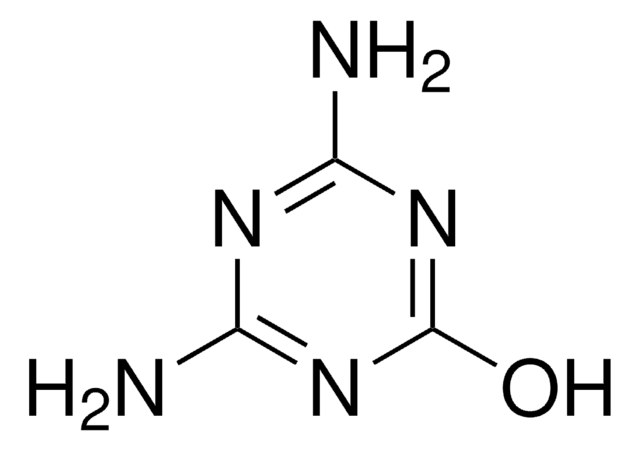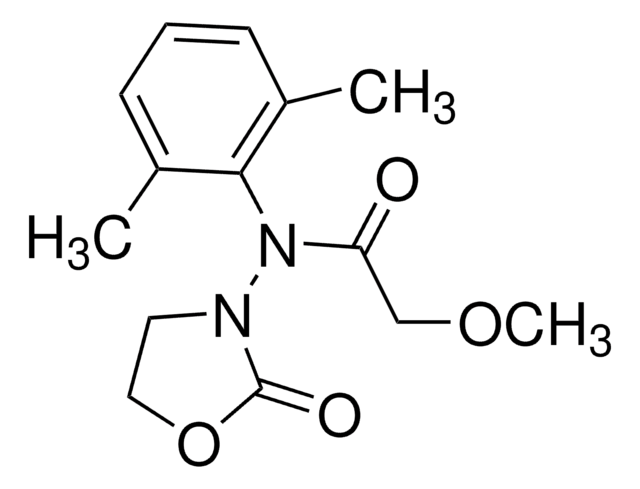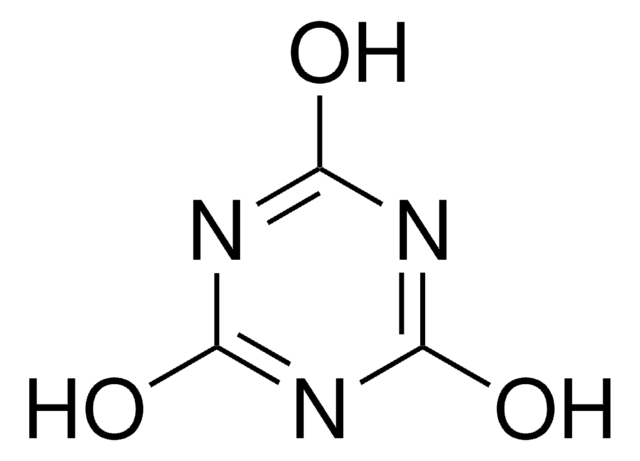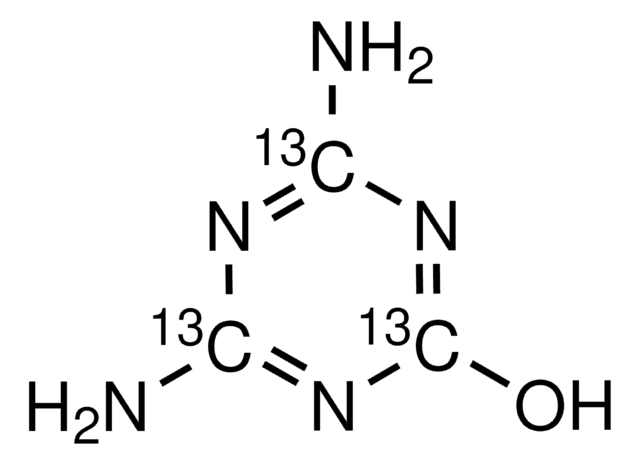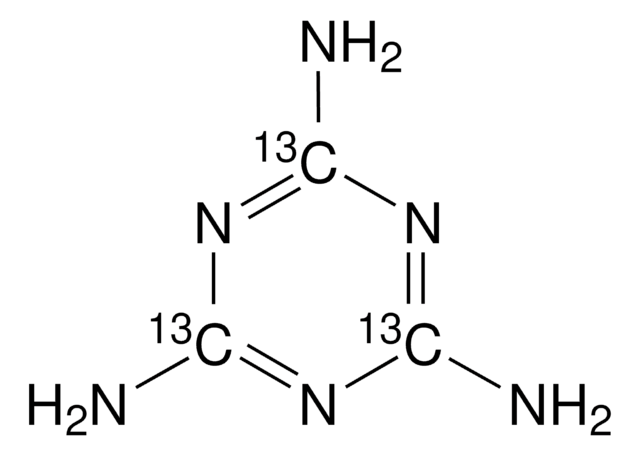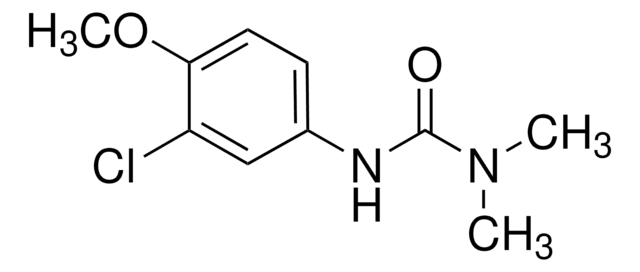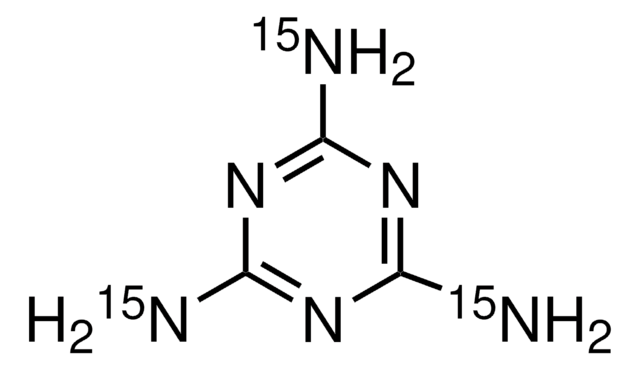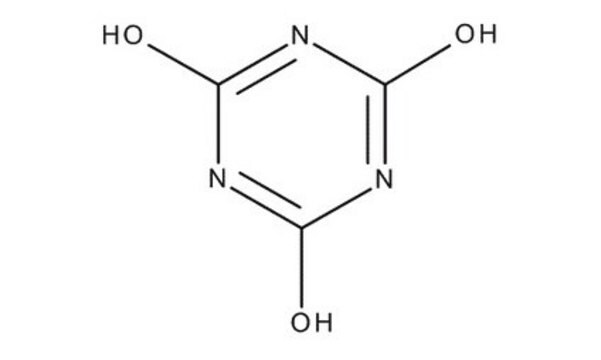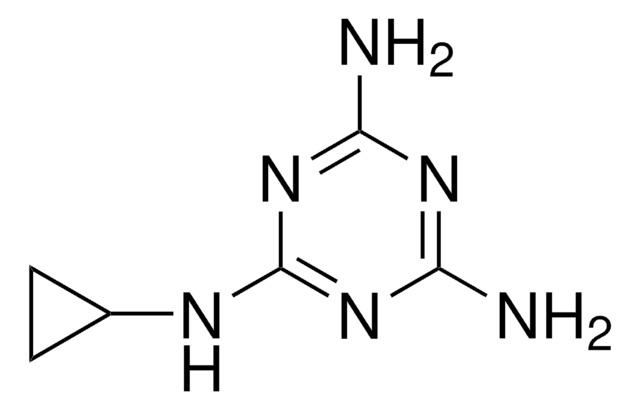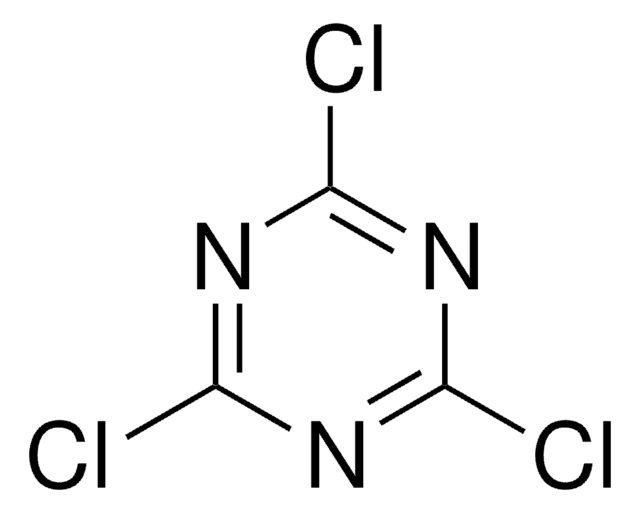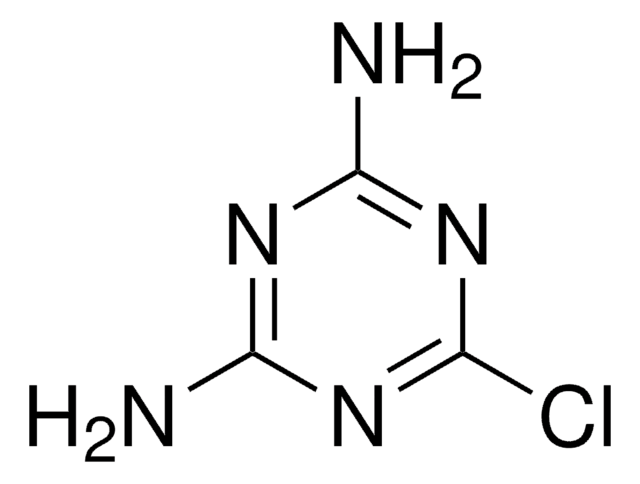49866
Ammelide
analytical standard
Sinónimos:
2-Amino-1,3,5-triazine-4,6-dione
Iniciar sesiónpara Ver la Fijación de precios por contrato y de la organización
About This Item
Fórmula empírica (notación de Hill):
C3H4N4O2
Número de CAS:
Peso molecular:
128.09
Número CE:
Número MDL:
Código UNSPSC:
85151701
ID de la sustancia en PubChem:
NACRES:
NA.24
Productos recomendados
grado
analytical standard
Nivel de calidad
Ensayo
≥98.0% (GC)
caducidad
limited shelf life, expiry date on the label
técnicas
HPLC: suitable
gas chromatography (GC): suitable
aplicaciones
cleaning products
cosmetics
food and beverages
personal care
Formato
neat
cadena SMILES
Nc1nc(O)nc(O)n1
InChI
1S/C3H4N4O2/c4-1-5-2(8)7-3(9)6-1/h(H4,4,5,6,7,8,9)
Clave InChI
YSKUZVBSHIWEFK-UHFFFAOYSA-N
Descripción general
Ammelide (AMD), a 1,3,5-triazine compound, is one of the hydrolysis by-products of melamine. It is most commonly found as an impurity in melamine and its structural analog, cyanuric acid feedstocks.
Ammelide can be synthesized via hydrolysis of 2-amino-4,6-dichloro-s-triazine in the presence of acid or base or by the reaction between urea and cyanogen iodide at 130-140 degrees.
Aplicación
Ammelide may be used as an analytical reference standard for the determination of the analyte in milk, milk products and infant formula using chromatography techniques.
Refer to the product′s Certificate of Analysis for more information on a suitable instrument technique. Contact Technical Service for further support.
Envase
Bottomless glass bottle. Contents are inside inserted fused cone.
Código de clase de almacenamiento
11 - Combustible Solids
Clase de riesgo para el agua (WGK)
WGK 3
Punto de inflamabilidad (°F)
Not applicable
Punto de inflamabilidad (°C)
Not applicable
Elija entre una de las versiones más recientes:
¿Ya tiene este producto?
Encuentre la documentación para los productos que ha comprado recientemente en la Biblioteca de documentos.
Los clientes también vieron
Paul M Murphy et al.
Proceedings of the National Academy of Sciences of the United States of America, 106(23), 9215-9220 (2009-05-28)
Altering the specificity of an enzyme requires precise positioning of side-chain functional groups that interact with the modified groups of the new substrate. This requires not only sequence changes that introduce the new functional groups but also sequence changes that
Limin He et al.
Journal of separation science, 32(19), 3310-3318 (2009-09-02)
A method for molecularly imprinted SPE of the melamine from environmental water samples was investigated. Cyromazine-imprinted polymers were synthesized in water-methanol systems for the selective extraction of melamine from aqueous samples, followed by HPLC analysis. Molecular recognition properties and binding
R W Eaton et al.
Journal of bacteriology, 173(3), 1363-1366 (1991-02-01)
DNA encoding the catabolism of the s-triazines ammelide and cyanuric acid was cloned from Pseudomonas sp. strain NRRLB-12228 and Klebsiella pneumoniae 99 with, as a probe, a 4.6-kb PstI fragment from a third strain, Pseudomonas sp. strain NRRLB-12227, which also
Rapoport, L. and Smolin, ME
The Chemistry of Heterocyclic Compounds, 26 (2009)
Eric A E Garber et al.
Journal of food protection, 73(4), 701-707 (2010-04-10)
The adulteration of food products with melamine to inflate the nitrogen content necessitates the establishment of analytical methods that can distinguish between proteinaceous ingredients and such adulterants. The specificity and ability to detect melamine by two commercial enzyme-linked immunosorbent assay
Nuestro equipo de científicos tiene experiencia en todas las áreas de investigación: Ciencias de la vida, Ciencia de los materiales, Síntesis química, Cromatografía, Analítica y muchas otras.
Póngase en contacto con el Servicio técnico